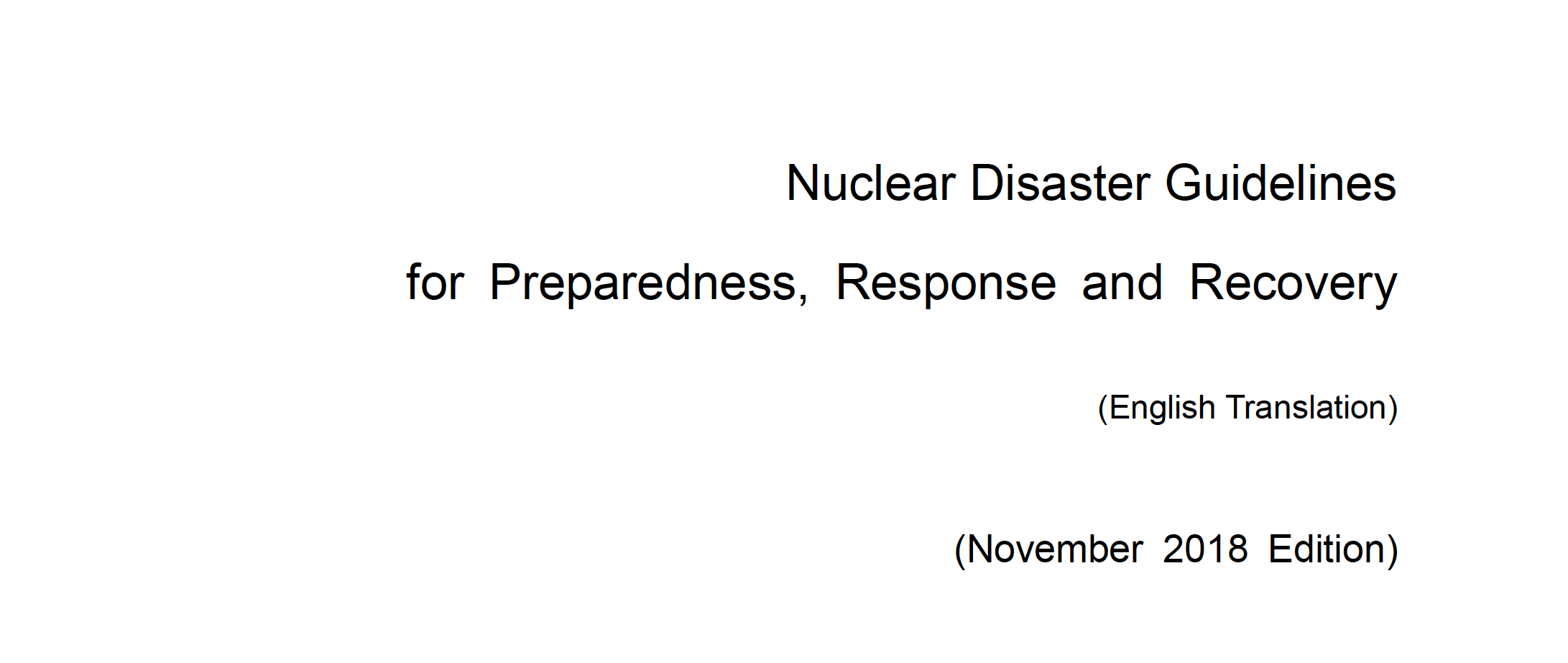Nuclear Disaster Guidelines – Japanese Red Cross Society – November 2018

The Japanese Red Cross Society issued the “Nuclear Disaster Guidelines for Preparedness, Response and Recovery” (Guidelines) on March 30, 2015, and made some changes to them afterward, in March 2016 and November 2018.
Based on the experiences and reflections of the activities conducted soon after the TEPCO’s Fukushima Daiichi Nuclear Power Plant accident (Fukushima Daiichi accident) in March 2011 which followed the Great East Japan Earthquake and Tsunami, and a resolution on “preparedness to respond to the humanitarian consequences of nuclear accidents” adopted at the General Assembly of the International Federation of Red Cross and Red Crescent Societies (IFRC) in November 2011, the JRCS has made efforts to prepare for nuclear disaster response to allow it to implement quick and appropriate humanitarian assistance activities in the event of a similar nuclear disaster in the future.
In May 2013, the JRCS created “Standards for Relief Activities during Nuclear Disasters” for JRCS relief teams. In March 2014, the JRCS provided protective equipment and materials against nuclear disasters to JRCS chapters and facilities across the country. This was followed by nuclear disaster preparedness education and training sessions since November 2014 for JRCS relief team members. In parallel with these activities, the JRCS was also developing the Guidelines.
On the assumption of a wide range of activities, the background of the Guidelines, the purpose, the scope and the considerations while providing activities are described in the Guidelines. The activity phases are divided into three phases: “Preparedness”; “Emergency Response”; and “Recovery”, and the Guidelines describe the JRCS activities to be provided in each phase based on the experience during the Fukushima Daiichi accident. Also, the safety standards are clearly stated in the Guidelines in order to ensure the safety of JRCS staff and Red Cross volunteers who will be responders in the event of a nuclear disaster. The safety standards comprise of assignment of activity areas and radiation dose management of each responder to ensure that the upper limit set in the Guidelines will not be exceeded. A system to provide expert counseling by Nuclear Emergency Medical Care Advisors is also instituted in these Guidelines.
To secure the objectivity and practicality of the Guidelines, the JRCS set up the “Guidelines for Red Cross Relief Activities during Nuclear Disasters Committee” (Guidelines Committee). The Guidelines were developed by referring to opinions and suggestions from the Guidelines Committee members from various viewpoints.
Damage from radiation is likely to go beyond the national border of the accident country to a wider region, and various effects are expected to emerge. Therefore, the nuclear disaster preparedness is an international challenge. Furthermore, since the JRCS is the only National Society whose country experienced both atomic bombings and a nuclear disaster, the JRCS believes that it is responsible for disseminating the experiences from the Fukushima Daiichi accident, and the development of the Guidelines to prepare for future possible nuclear disasters is one of its specific activities.
The Guidelines are about the JRCS’s course of action in the event of a nuclear disaster. However, it is expected that the sister National Societies would utilize the Guidelines as their reference materials for their nuclear disaster preparedness as well as the Nuclear and Radiological Emergency Guidelines developed by the IFRC.
